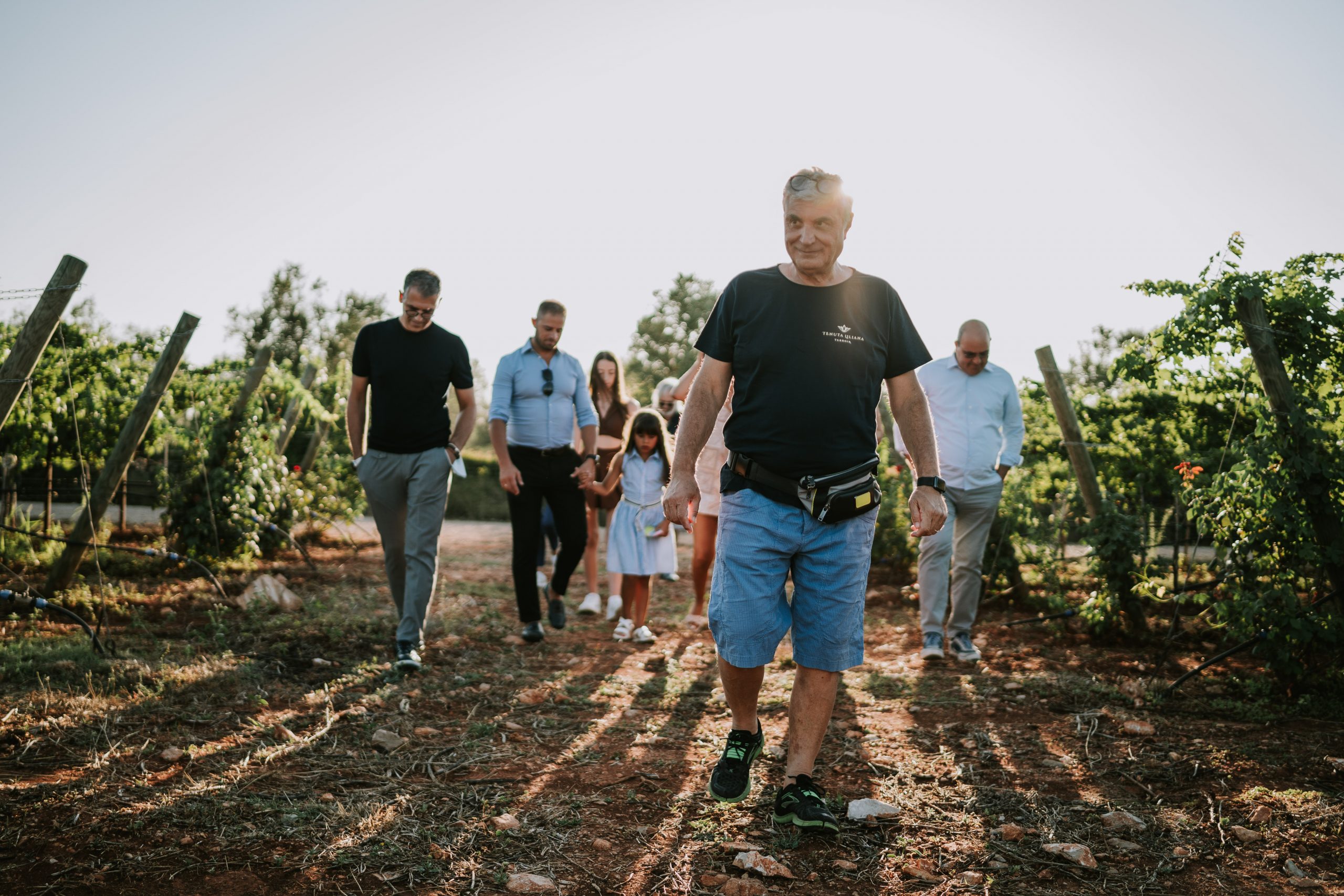Being passionate about the world of wine is a bit like being passionate about art, because when you come across a new artist, you welcome the opportunity to attend an exhibition in order to get to know them ‘in the flesh’, so to speak. In the same way, when you really want to understand a wine, you need to know where it comes from.
Those who appreciate wine know that it is the result of a fascinating synergy between nature and man, sometimes summed up in the word ‘Terroir’.
‘Terroir’ is a French term that has no real translation in our language, but whose meaning encompasses the interaction between climate, soil, vine, location and traditions (the latter including people and their techniques). It is this interaction that gives a wine its own particular identity and character.
So, by getting to know the ‘terroir’, you get to know the wine and it is for this reason that the opportunity to visit the winery, along with its vineyards, its people and its cellar, is always an important occasion.
Visits to wineries usually begin with a guided walk through the rows of vines, allowing you to discover essential information, such as the composition of the soil, the grapes chosen, the exposure, the state and age of the vines, but also, and above all, allowing you to learn about the choice of methods and how the vineyard is managed.
Your tour might continue on to the cellar where the magic happens. Here, first of all, you will notice how well the place is cared for and how clean it is, which is very important, and then the producer’s story will give you a better understanding of what is going on, in other words, what production techniques have been chosen, what materials are used for ageing, what stage of production has been reached and what oenological techniques are used. In the cellar, if you are lucky, you might even be able to taste some of the wine that is being rested, before being bottled, an experience that will allow you to understand the development of this fascinating beverage.
After the cellar, it is usually time for the most relaxing part, the tasting. A horizontal tasting (i.e. of different labels) will allow participants to understand which wines are produced at the winery, while a vertical tasting (same wine, but different vintages) will help them understand the potential of a particular wine.
Hence, these visits allow the wine to be put into context. Enthusiasts and inquirers should aim to create a mental map that delves into various places or entire regions and, step by step, dig deeper and deeper, narrowing the field until they understand the multifaceted essence of each piece of land.
If I may, dear readers, a postscript. It’s important to remember that visiting a winery is a bit like having dinner at a friend’s house. The house will always be decorated for the occasion and the dust will always have been swept under the carpet, so you need a keen eye and the ability to listen to all the information given, so as to discern between what is true and what only appears to be true.
by Ilaria Giardini for Tenuta Liliana




